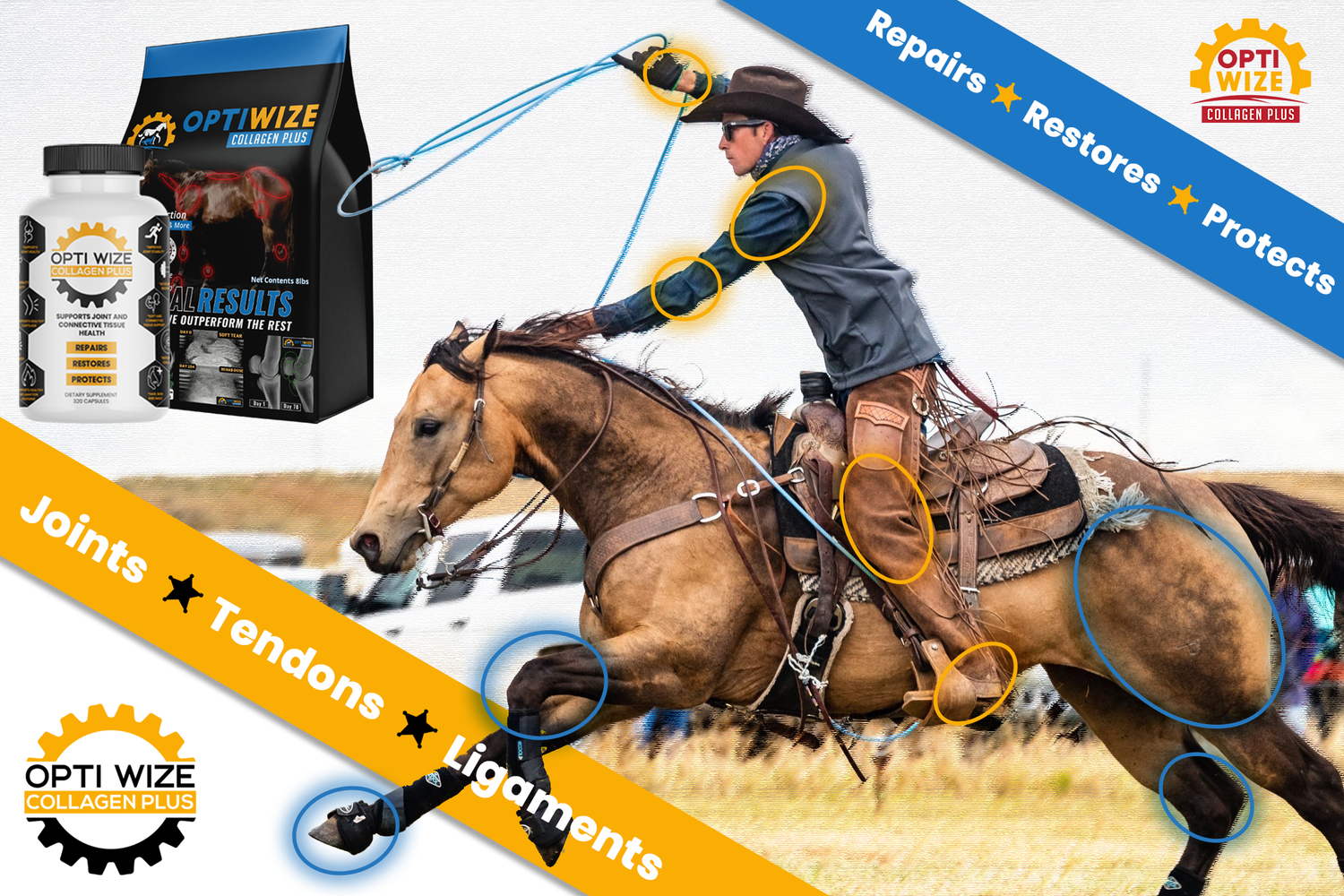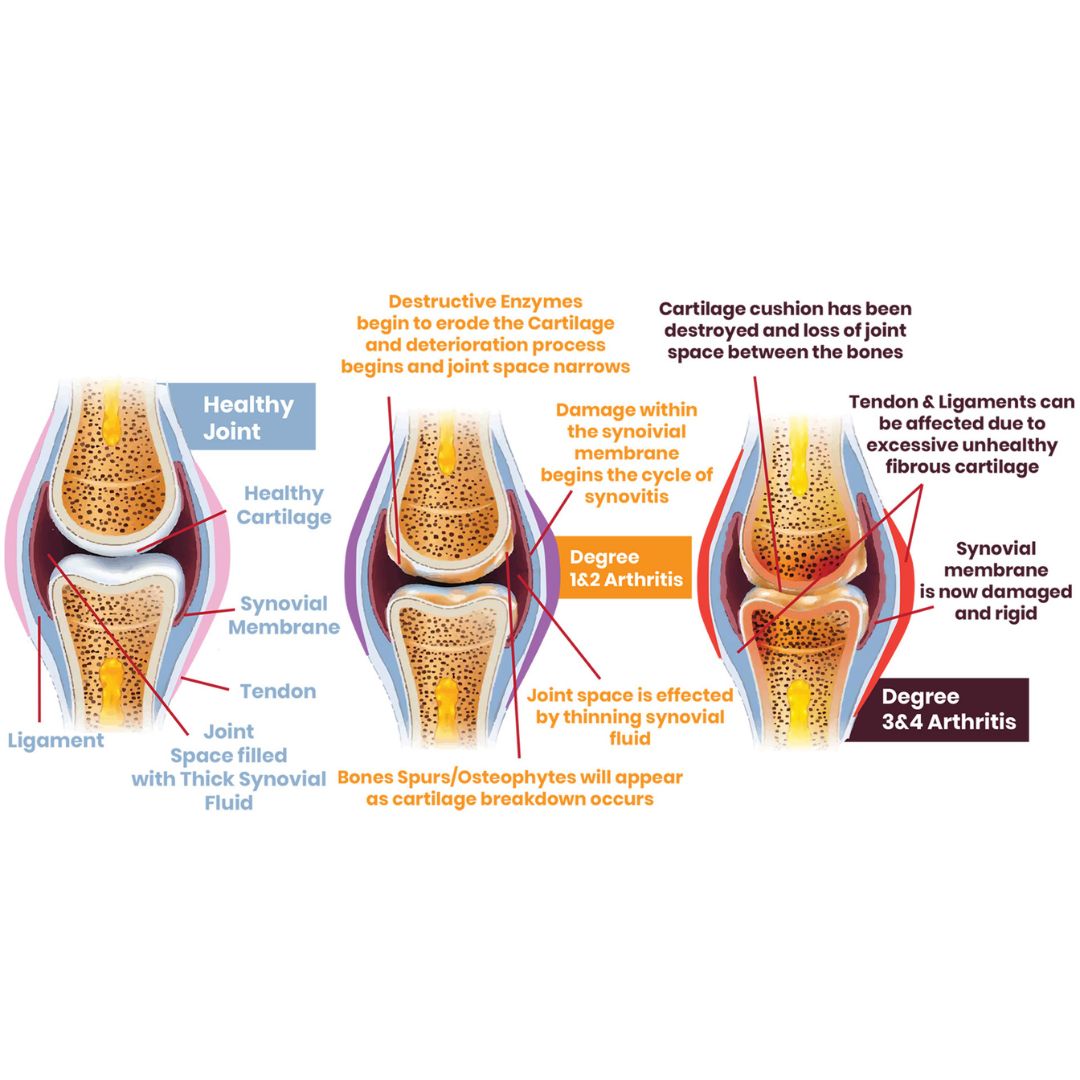Cranial Cruciate Ligament (CCL) injuries are among the most common orthopedic issues in dogs, leading to lameness and joint instability. Similar to the anterior cruciate ligament (ACL) in humans, the CCL in dogs plays a crucial role in stabilizing the knee joint. When damaged, it can significantly impact a dog's mobility and overall quality of life.
What is a CCL Injury in Dogs?
The Cranial Cruciate Ligament (CCL) is a vital ligament in a dog's stifle joint, preventing excessive forward movement and rotation of the tibia. When this ligament tears or ruptures, it results in instability, pain, and an increased risk of arthritis.
Cranial Cruciate Ligament injury in dogs can occur due to:
- Degenerative changes over time
- Sudden trauma from running, jumping, or twisting motions
- Genetic predisposition in certain breeds
- Obesity, which places excessive stress on the joints
- Conformational abnormalities, which put extra strain on the ligament
- Hormonal influences, especially in neutered dogs
Breeds Prone to CCL Injuries
While any dog can suffer from a CCL tear in dogs, certain breeds have a higher risk due to genetic predisposition and structural characteristics. These include:
- Labrador Retrievers
- Golden Retrievers
- Rottweilers
- German Shepherds
- Newfoundland Dogs
- Bulldogs
- Boxers
Symptoms of CCL Injuries in Dogs
Recognizing the signs of a CCL injury in dogs early can help ensure timely intervention. Common symptoms of Cranial Cruciate Ligament injury include:
- Sudden limping or lameness in one leg
- Difficulty standing up or jumping
- Swelling around the knee joint
- Decreased activity levels and reluctance to exercise
- A characteristic "toe-touching" stance
- Progressive muscle loss in the affected leg
- Audible clicking sounds from the knee joint
- Shifting weight to the other leg to compensate
Many of these symptoms may also overlap with a soft tissue injury in dogs, so a proper diagnosis is essential.
Diagnosing a CCL Injury in Dogs
Veterinarians typically use multiple diagnostic methods to confirm a CCL tear in dogs:
- Physical Examination - Checking for joint instability using the drawer test and tibial compression test.
- X-rays (Radiographs) - Identifying joint swelling and secondary arthritis.
- Arthroscopy - A minimally invasive procedure that allows direct visualization of ligament damage.
- MRI or CT Scans - In some cases, advanced imaging techniques may be used for precise diagnosis.
These tests help differentiate between CCL in dogs and other issues like a soft tissue injury in dogs or hip dysplasia.

Treatment Options for CCL in Dogs
There are several approaches to treating Cranial Cruciate Ligament injury in dogs, depending on the severity and the dog's size, age, and activity level.
1. Conservative Management (Non-Surgical Treatment)
For small dogs or those with partial tears, conservative treatment may include:
- Weight management to reduce joint stress
- Physical therapy and rehabilitation
- Anti-inflammatory medications to reduce pain and swelling
- A ligament supplement for dogs like OptiWize, formulated with ten powerful ingredients, supports dogs recovering from Cranial Cruciate Ligament injuries by promoting joint repair, reducing inflammation, and enhancing mobility. Key ingredients like hydrolyzed collagen, glucosamine, chondroitin, and MSM aid in rebuilding cartilage and connective tissues, while omega-3 fatty acids, green-lipped mussel, and hyaluronic acid improve joint lubrication and flexibility. Manganese and vitamin C contribute to tissue repair, and gamma oryzanol provides antioxidant support. Together, these ingredients help repair damaged ligaments, restore joint function, and protect against further injury, making OptiWize an excellent addition to a dog's recovery plan.
- Knee braces for additional support
- Platelet-Rich Plasma (PRP) Therapy, which uses growth factors to promote healing
- Acupuncture and laser therapy to reduce pain and inflammation
2. Surgical Treatment for CCL Injuries
For complete CCL tears in dogs, surgery is often the best option to restore function and reduce long-term joint damage. Common surgical techniques include:
- Tibial Plateau Leveling Osteotomy (TPLO): This procedure alters the knee's biomechanics to eliminate the need for a functional CCL.
- Tibial Tuberosity Advancement (TTA): A surgical method that shifts the tibial tuberosity to stabilize the joint.
- Lateral Fabellar Suture (Extracapsular Repair): A less invasive technique that uses sutures to mimic the ligament's function.
- Tightrope CCL Repair: A minimally invasive alternative to TPLO and TTA using synthetic material to stabilize the knee.
These procedures aim to stabilize the knee joint and prevent further CCL injury in dogs.
Rehabilitation and Recovery
Post-surgical rehabilitation plays a crucial role in recovery. Effective rehab strategies include:
- Controlled exercise regimens to rebuild muscle strength
- Hydrotherapy to improve mobility without excessive joint strain
- Cold laser therapy for pain relief and tissue healing
- Massage therapy to enhance circulation
- Passive range-of-motion exercises to prevent stiffness
- Balance training to improve coordination
These practices help rebuild strength and prevent a future CCL tear in dogs or soft tissue injury in dogs during recovery.
Preventing CCL Injuries in Dogs
While not all CCL injuries can be prevented, certain measures can help reduce the risk:
- Maintain an ideal body weight to prevent joint stress
- Provide regular exercise to strengthen muscles and ligaments
- Avoid high-impact activities on hard surfaces
- Use a quality ligament supplement for dogs to support joint health. OptiWize can help prevent CCL injuries in dogs by strengthening joints, improving flexibility, and reducing inflammation before damage occurs. Its collagen, glucosamine, and chondroitin work together to maintain strong ligaments and cartilage, reducing the risk of CCL tears in dogs. MSM and omega-3 fatty acids combat inflammation, keeping joints mobile and resilient. Hyaluronic acid and green-lipped mussel support joint lubrication, minimizing wear and tear, while manganese and vitamin C enhance connective tissue health. With regular supplementation, OptiWize helps reinforce joint stability, reduce strain, and keep active or at-risk dogs moving comfortably for longer, lowering the likelihood of CCL in dogs.
- Implement proper warm-up and cool-down routines before exercise
- Consider early screening in high-risk breeds
Long-Term Outlook for Dogs with CCL Injuries
Most dogs recover well from a CCL tear in dogs when given the right treatment and rehabilitation plan. if left untreated, the condition can lead to severe arthritis and chronic pain. Pet owners should work closely with veterinarians to determine the best treatment plan based on their dog's needs.
Conclusion
A CCL injury in dogs is a serious concern for dog owners, but with proper diagnosis, treatment, and rehabilitation, most dogs can recover well. Understanding the risk factors and taking preventive measures can help keep your dog's joints healthy and strong.
Find out more about OptiWize for Dogs
Research
1. "Cranial Cruciate Ligament Rupture in Dogs: Review on Biomechanics, Etiopathogenetic Factors, and Rehabilitation"
Authors: Alessandro Piras, Francesco Staffieri, Giuseppe Spinella, and Giuseppe Lacitignola
Published in: Veterinary Sciences, September 2021
Summary: This review examines the biomechanics, causes, and rehabilitation methods for CCL rupture in dogs, highlighting differences and similarities between canine and human cases.
Link: MDPI
2. "Etiopathogenesis of Canine Cruciate Ligament Disease: A Scoping Review"
Authors: Gert W. Niebauer and Brunella Gaschen
Published in: Animals, January 2023
Summary: This scoping review focuses on the multifactorial mechanisms leading to degenerative stifle joint disease and CCL rupture in dogs.
Link: MDPI, ResearchGate
3. "Risk Factors for Cranial Cruciate Ligament Rupture in Dogs Participating in Canine Agility"
Authors: Wendy Baltzer and James R. Rist
Published in: BMC Veterinary Research, January 2022
Summary: This study evaluates risk factors such as breed, body weight, gender, spay/neuter status, and age associated with CCL rupture in physically active dogs.
Link: BioMed Central
4. "Studies Analyze Factors, Outcomes Associated with Cranial Cruciate Ligament Rupture Surgery"
Authors: American Veterinary Medical Association (AVMA)
Published in: AVMA News, March 2023
Summary: This article discusses recent studies providing guidance on diagnosing and treating CCL injuries, emphasizing factors like degeneration, obesity, physical condition, genetics, and breed.
Link: Home
5. "Update on the Aetiopathogenesis of Canine Cranial Cruciate Ligament Disease"
Authors: E. J. Comerford, K. Smith, and K. Hayashi
Published in: Veterinary and Comparative Orthopaedics and Traumatology, 2011
Summary: This article reviews the gradual degeneration of the ligament's extracellular matrix leading to rupture and identifies risk factors such as breed, body weight, gender, and conformation.
Link: Thieme, ThiemeMDPI
6. "The Epidemiology of Cruciate Ligament Rupture in an Insured Swedish Dog Population"
Authors: Karolina Engdahl, Ulf Emanuelson, Odd Höglund, and Henrik S. Lagerstedt
Published in: Scientific Reports, May 2021
Summary: This study investigates the prevalence and epidemiology of CCL rupture in an insured canine population, providing insights into the commonality of the condition.
Link: Nature, NatureResearchGate, BioMed Central
7. "Surgical Treatment of Cranial Cruciate Ligament Disease in Dogs Using Tibial Plateau Leveling Osteotomy or Tibial Tuberosity Advancement: A Systematic Review with a Meta-Analytic Approach"
Authors: Annika Christina Wemmers, Marios Charalambous, Oliver Harms, and Holger Andreas Volk
Published in: Frontiers in Veterinary Science, December 2022
Summary: This systematic review compares the outcomes of TPLO and TTA surgical techniques for correcting CCL rupture in dogs.
Link: Frontiers
8. "Canine Cranial Cruciate Ligament Disease Part 1 - Pathophysiology"
Authors: David Dycus
Published in: Vet Times, 2017
Summary: This article delves into the pathophysiology of CCL disease, discussing how factors like body condition score (BCS) and obesity contribute to ligament rupture.
Link: vettimes.co.uk
These articles offer valuable insights into the causes, risk factors, diagnosis, and treatment options for CCL injuries in dogs, contributing to a comprehensive understanding of this common orthopedic condition.



